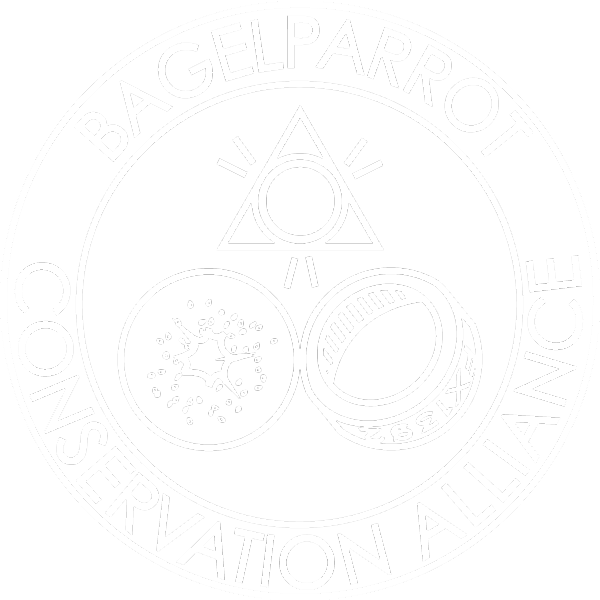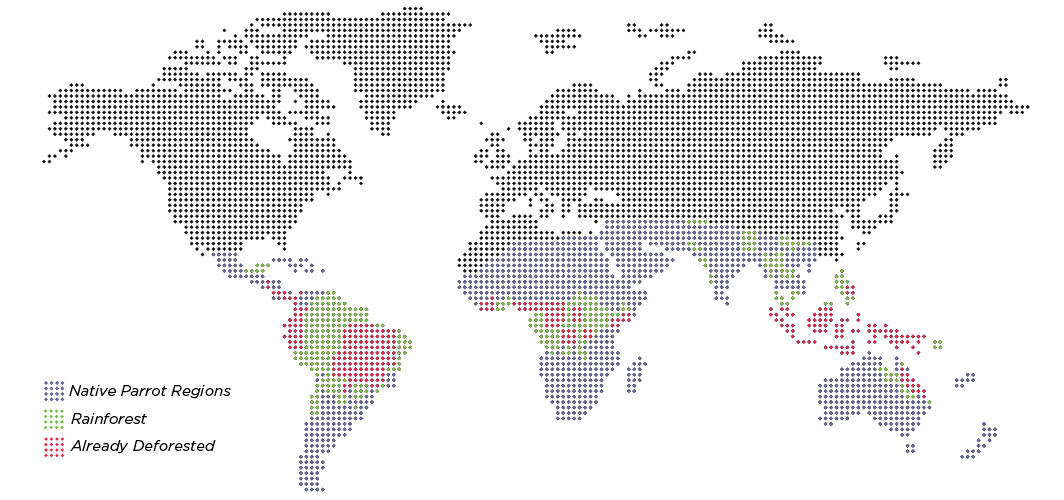Parrots are Native to the World’s Most Deforested Areas
The world needs forests. Tropical rainforests are complex and fragile ecosystems that play a fundamental role in regulating the basic functions of the planet. They provide oxygen needed for life and stabilize atmospheric gases and rainfall. They’re also home to some of the most threatened and endangered wildlife on earth. As some of the most biodiverse places on the planet, the destruction of rainforests spells disaster for wildlife. Agricultural commodities such as soy, timber, palm oil, and pasture land are the most significant threats to forests¹. Try not to support products that destroy the environment.
Every second, a slice of rainforest the size of a football field is mowed down³.
Endemic to tropical regions that are among the most deforested areas in the world, parrots are one of the first victims of deforestation. Up to 90% of Africa’s coastal rain forests have already been destroyed since 1900². Indonesia and Brazil, home to the last two largest surviving regions of rainforest, are still cutting down rainforest tracts at alarming rates. With millions of acres of forests being cleared each year, many more species are becoming critically endangered, and many are already extinct. One of the essential conservation goals for wildlife is to protect their native habitat; without a home, they do not stand a chance of survival.
Rainforests are home to more than half of the world’s animals. Because parrots are able to fly great distances, they need more area than any other animal to forage for food and nest. As a result, protecting parrots means conserving big habitats with lots of biodiversity. This makes them an important “umbrella species”: the conservation of a parrot’s habitat covers all other wildlife in the forest, including monkeys, big cats, frogs, insects, and snakes.
Deforestation has dangerous implications for humans, too. Forest loss accounts for 20% of carbon emissions; that’s more than all the world’s cars, planes, trains, and ships combined⁴. Trees are natural consumers of carbon dioxide, and the destruction of trees pumps methane into the atmosphere. Climate change is a direct result of the increase in these greenhouse gases. We can all do our part by reducing our individual carbon footprint and boycotting products that destroy our forests.
Shape the conversation by influencing policymakers! BCA mobilizes local communities to petition for legislation that protects local species and supports sustainable agriculture.
Wageningen University and Research Centre. “Agriculture is the direct driver for worldwide deforestation.” ScienceDaily. 25 September 2012. Web. 2 May 2014.
“Forest Holocaust”. National Geographic. Web. 2 May 2014.
“Rainforests.” The Nature Conservancy”. Web. 2 May 2014.
“Reducing emissions from deforestation and forest degradation (REDD+)”. WWF. Web. 2 May 2014




